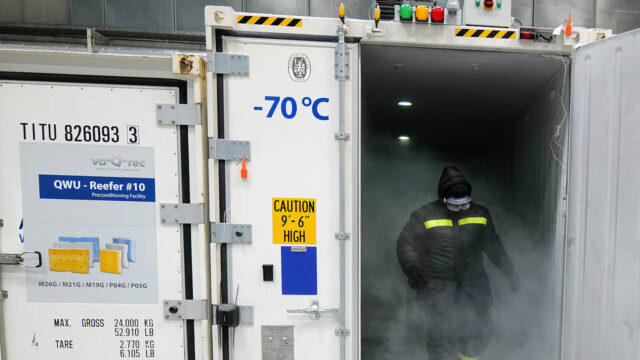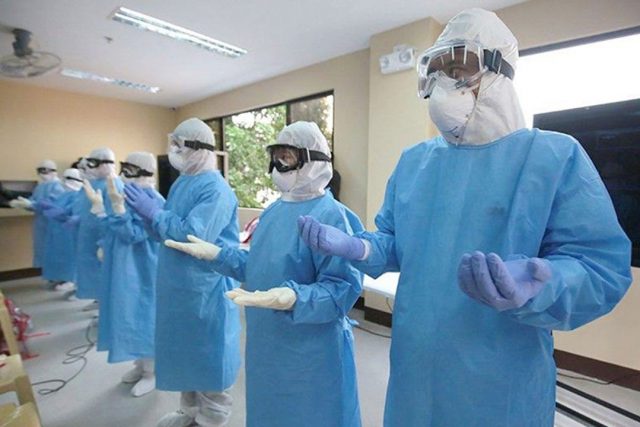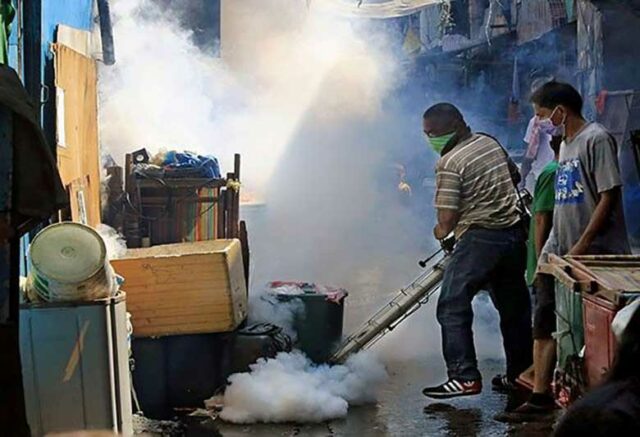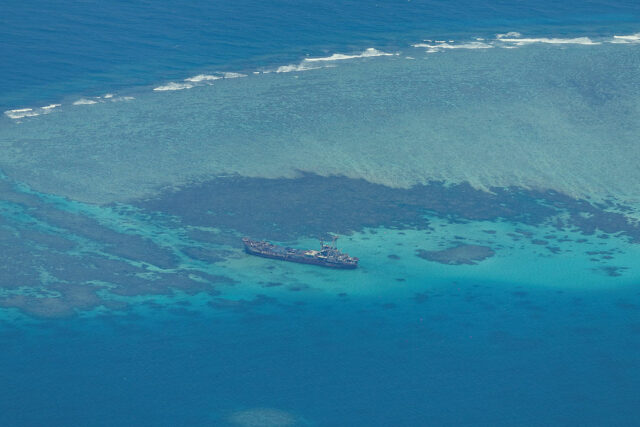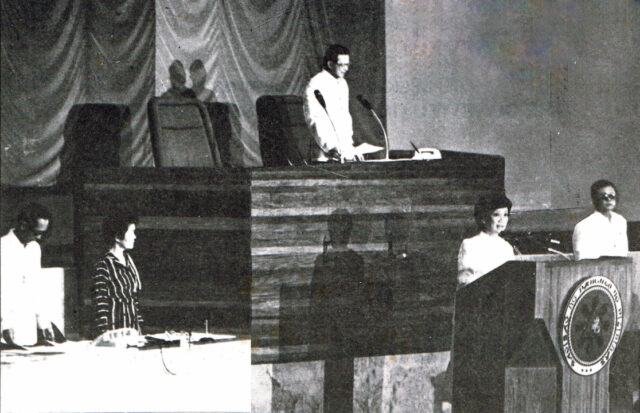Decisions of the Supreme Court (SC) form part of the law of the land. This settled rule is supported by the legal maxim “legis interpretatio legis vim obtinet,” which means “the interpretation placed upon the written law by a competent court has the force of law.”
Under the principle of the Separation of Powers, each of the three branches of government (executive, legislative, and judicial) has exclusive authority to exercise the powers specifically vested in them by the Constitution. Any encroachment of power is ultra vires and is void. Thus, the executive department, which is vested with the power to implement the laws, is not authorized to exercise legislative power (the power to propose, enact, amend, and repeal laws) nor judicial power (to interpret the laws with finality).
Adhering to such principles, administrative agencies such as the Bureau of Internal Revenue (BIR) in the exercise of quasi-legislative or rule-making power, may only issue regulations consistent with the law they seek to enforce and administer. The rule is that regulations may not enlarge, alter, restrict, or otherwise go beyond the provisions of the law. Administrators and implementors cannot engraft additional requirements not contemplated by the legislature. (Commissioner of Internal Revenue vs. Central Luzon Drug. G.R. No. 159647)
In Revenue Memorandum Circular (RMC) No. 5-2024, the BIR recently clarified the proper tax treatment of cross-border services in light of the SC En Banc Decision in Aces Philippines Cellular Satellite Corp. vs. The Commissioner of Internal Revenue and provided a framework for assessing the final withholding tax and the final withholding Value-Added Tax (VAT) on the activities of non-resident foreign corporations (NRFC) within the Philippine jurisdiction.
SALIENT FEATURES OF ACES PHILIPPINES CASE
The SC used the two-tiered approach in determining the taxability of satellite airtime fee payments by identifying the source of income and the situs of income.
Source of Income
Income refers to the flow of wealth. The source of income is the property, activity, or service that causes an increase in economic benefit, which may be in the form of an inflow or enhancement of assets or a decrease in liabilities with a corresponding decrease in equity other than that attributable to a capital contribution.
The income source of Aces Bermuda is the gateway’s receipt of the call as routed by satellite, as it coincides with the (1) completion or delivery of the service and (2) the inflow of economic benefits in favor of Aces Bermuda.
• Completion or delivery of service — The income-generating activity takes place not during the act of transmission but only upon the gateway’s receipt of the call as routed by satellite, as there is a continuous and very real connection between the satellite in outer space, control center in Indonesia, and the terminals and gateways in the Philippines.
• Inflow of economic benefits — The accrual of satellite airtime fees marks the inflow of economic benefits. The satellite airtime fees accrue only when the airtime is delivered to Aces Philippines (i.e., upon the gateway receipt of the routed call) and utilized by the Philippine subscribers for voice or call data.
Situs of Income
It is the place where the inflow of wealth and/or economic benefit proceeds from or where the flow of wealth/economic benefit occurs. The situs of Aces Bermuda’s income from satellite airtime fee payments is in the Philippines due to the following:
(i) The income-generating activity is directly associated with the gateways located in the Philippine territory. Since income generation is dependent on the operation of facilities situated in the Philippines, this contributes to the income’s Philippine situs.
(ii) Engaging in the business of providing satellite communication services in the Philippines is a government-regulated industry.
(iii) Aces Bermuda failed to establish that satellite airtime fee payments are foreign-sourced. It failed to contradict the fact that those services are completed and performed in the Philippines.
CROSS-BORDER SERVICES
This refers to services provided by service-based companies operating in various jurisdictions where income earned is allocated to the countries where the services are performed, considering factors such as time spent, resources utilized, or value created in each jurisdiction.
International service provision, also known as cross-border services, includes (i) Consulting services; (ii) IT Outsourcing; (iii) Financial services; (iv) Telecommunications; (v) Engineering and construction; (vi) Education and Training; (vii) Tourism and Hospitality; (viii) and other similar services.
For cross-border services where the services are carried out, processed, or performed overseas but the result or output is used locally, payments to foreign firms for these services are considered income sourced within the Philippines.
SITUS OF TAXATION FOR CROSS-BORDER SERVICES
The situs of taxation for cross-border services is where the source of income (i.e., property, activity or service that produced the income) occurs. If the revenue-generating activity occurs within the Philippine territory or if the flow of wealth proceeds from the Philippines, the situs of taxation is in the Philippines.
Under the source-based principle of taxation, the jurisdiction where the economic activity occurs should have the right to tax that income, regardless of where the payment is made or received. Thus, the source of income is not necessarily determined by the location where the payment is disbursed or physically received, but rather by the location where the underlying business activities that produced the income actually took place. This principle ensures that income is taxed in the jurisdiction where economic activity occurs and thus prevents tax avoidance.
Where business transactions occur in multiple stages across various taxing jurisdictions, it is imperative to ascertain whether the particular stages occurring in the Philippines are so integral to the overall transaction that the business activity would not have been accomplished without them. If the income-generating activities in the Philippines are deemed essential, the income derived from these activities shall be considered, for tax purposes, as sourced within the Philippines, irrespective of where the payment is ultimately received.
Thus, under the Benefit-Received Theory principle of taxation, the jurisdiction that provides the essential services or factors for income generation should be entitled to tax that income.
VAT TREATMENT FOR CROSS-BORDER SERVICES
Income generated from service fees paid to foreign companies or individuals is subject to VAT if the source of income is within the Philippines, regardless of where the payout is disbursed or physically received. The source of income means that even if the services are conducted or paid for abroad and the activities to be performed in the Philippines are so essential that the entire service transaction cannot be accomplished without them, then, the Benefit-Received theory applies. Hence, revenue-generating activity occurs within the Philippines. This means that if the service provider is located outside the country, if the service is utilized, applied, executed, or consumed for a recipient within the Philippines, the income payment for such a service is considered sourced within the country, and thus, the VAT is applicable. Consequently, payment for such service shall be subject to final withholding VAT.
REIMBURSABLE OR ALLOCABLE EXPENSES
The reimbursable or allocable expenses charged by a foreign corporation in the Philippines should contribute to the value or benefit received by a local company. Otherwise, it may be considered income (reduction in expenses) as it represents a financial gain or savings for the foreign company, thereby effectively increasing the latter’s net income or profit. If, however, the Philippine company derives no benefits therefrom or no income is generated through business activities conducted in the Philippines, reimbursement or the allocation of the expenses by the foreign company in the Philippines may be seen as an attempt to evade taxes or manipulate profits by funneling them to a foreign entity.
RMC 5-2024 AND SITUS RULE ON SALE OF SERVICES
Under the Tax Code, a foreign corporation is subject to tax on gross income from all sources within the Philippines. Section 42 of the NIRC, as amended, sets the Philippine source of income rules, stating that compensation for services performed in the Philippines is considered income from sources within the Philippines, while compensation for services performed outside the Philippines is considered income from sources without the Philippines. Thus, the laws are clear; the situs of taxation for sale of services is where the performance of services takes place.
Further, under Section 32(B) (5), a nonresident foreign corporation that is a resident of a country with whom the Philippines has a tax treaty may be exempt from Philippine income tax if conditions under the treaty are met. Thus, if its income is not attributable to a permanent establishment (PE) in the Philippines, the NRFC shall not be subject to income tax. As a corollary, if there is no PE created in the Philippines (e.g., furnishing of services in the Philippines through employees or other personnel thereof for a period or periods aggregating more than 183 days), the NRFC may not be subject to Philippine tax.
In RMC 5-2024, however, the BIR used the Benefit-Theory approach in determining the income tax and VAT treatment for all cross-border services without qualification. This approach effectively subjects all services of the NRFC to Philippine customers to income tax and VAT, albeit services rendered abroad, if the services are utilized, applied, executed, or consumed within the Philippines. This means that all services used by recipients located in the Philippines may be subject to income tax and VAT.
In the Aces case, the Supreme Court did not depart from the general source of income tax rule for services which is the place of performance of service. As the performance of services of Aces Bermuda did not cease at the point of transmission (outside the Philippines) but continues until such time Aces Bermuda delivers the satellite communication time (i.e., routes the call) to the Philippine gateway, the SC deemed it necessary to determine the inflow of economic benefit to determine situs of taxation as there is a continuous and very real connection between the satellite in outer space, the control center in Indonesia and the terminals and gateways in the Philippines.
Since Aces Philippines cannot be charged anything at the point of transmission inasmuch as there has not been any usage at that time, the inflow of economic benefits (accrual of fees) only arises when the satellite air time is delivered to Aces Philippines (i.e., upon the gateway receipts of the routed call) and is utilized by the Philippine subscribers for voice or data calls. Indeed, the SC was able to establish that the completion of delivery of services occurred in the Philippines.
On the other hand, in RMC 5-2024, the far-reaching principle of “inflow of economic benefit” was uniformly applied to all services of the NRFC. Payments to foreign consulting firms where consulting services are carried out abroad but the results or outputs are used locally are considered an inflow of economic benefits to the foreign company, and thus, income is sourced within the Philippines. The RMC also included in its list of cross-border services all services that are provided, processed, and performed overseas but utilized, applied, executed, and consumed within the Philippines.
It bears stressing that the special circumstances in the Aces case are not present in other cross-border services cited in the RMC. Consulting services, IT outsourcing, financial services, engineering and construction, and education and training are services that are normally conducted remotely and outside Philippine territory. These do not involve multiple stages to complete the delivery of the services and do not require specialized equipment within the Philippines to complete the services. Further, consulting fees or service fees for these types of services are normally accrued at the time the NRFC (service providers) accepts the engagement and is not dependent on the utilization and application of such services by the local recipient.
Thus, the BIR may revisit the application of the Benefit-Received approach of taxation across all cross-border services as each cross-border service is unique and different from each other.
REPERCUSSIONS OF THE RMC AND WHAT TAXPAYERS SHOULD DO
The issuance of the RMC may open various interpretations of the situs rules for services rendered by the NRFC during tax investigation and audit. Thus, it will be prudent for companies with income payments to NRFCs or have allocable or reimbursable expenses arising from cross-border services with related parties or affiliates to secure a Request for Confirmation with the BIR confirming the tax consequences of transactions and arrangements with NRFC.
Let’s Talk Tax is a weekly newspaper column of P&A Grant Thornton that aims to keep the public informed of various developments in taxation. This article is not intended to be a substitute for competent professional advice.
Paraluman Andres-Neagoe is a partner from the Tax Advisory & Compliance division of P&A Grant Thornton. P&A Grant Thornton is one of the leading audits, tax, advisory, and outsourcing firms in the Philippines, with 29 Partners and more than 1000 staff members. We’d like to hear from you! Tweet us: GrantThorntonPH, like us on Facebook: P&A Grant Thornton
pagrantthornton@ph.gt.com
www.grantthornton.com.ph



